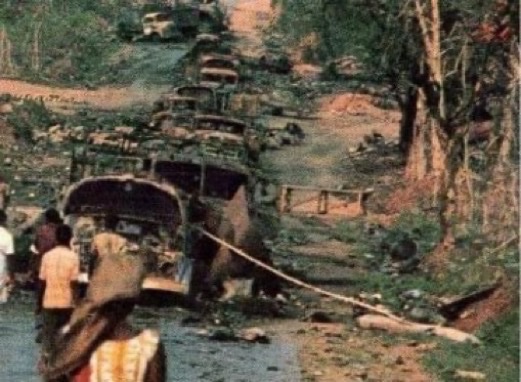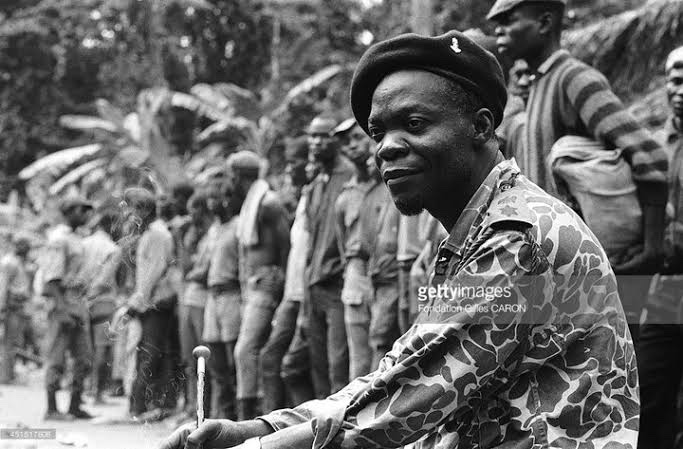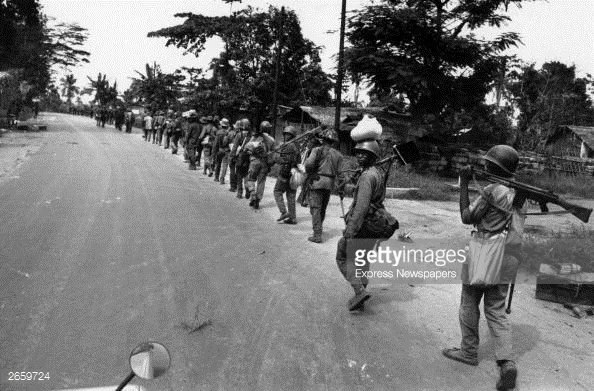The Story Of The Abagana Ambush That Happened On March 31, In 1968 during the Nigeria- Biafra civil war
A thread
Retweet to educate someone



A thread
Retweet to educate someone




Abagana Ambush of March 31, 1968 was an ambush by Biafran guerrilla troops led by Major Jonathan Uchendu that wiped out the Nigerian 2 Division. During this ambush, the Nigerian Army suffered the heaviest defeat in the civil war.
Of the 5,000 Nigerian troops ambushed, only a very small number survived, including the 2nd Division's commander, Col. Murtala Ramat Muhammed. Murtala was said to have assembled and deployed a convoy of 105 vehicles which included troop carriers, fuel tanker
and four armoured cars to facilitate this plan on March 31, 1968. However, the Biafran secret intelligence gained knowledge of the plan and reported it to a higher Biafran command which instantly planned a deadly ambush. A 700-man troop, led by Major Uchendu, was given a huge
task by Col. Achuzie to ambush the invading Nigerian troops at Abagana in the Enugu-Onitsha highway. The unsuspecting Nigerian 2nd division, numbering about 5000 soldiers, marched on until they were halted by a surprise attack from a smaller but well-prepared Biafran army.
The Biafran army allowed the Nigerian army to march right into their midst before raining bullets on them. A locally made rocket called Ogbunigwe was crucially used during the Ambush. One of the Ogbunigwe rockets was launched directly at a fuel tanker in the Nigerian army convoy
leading to chains of explosions which created a 450-metre great fire that incinerated men and metals within seconds. Refuelling vehicles exploded and burnt many infantry units. After the Ogbunigwe rocket attack, Biafran soldiers opened fire, killing what is left of the shocked 



2nd division of the Nigerian Army.
About 2,500 Nigerian army died in the attack; many others scampered in different directions. Col. Murtala Muhammed was relieved of duty afterwards and never commanded a division again during the war. Major Uchendu, the commander of the Biafran
About 2,500 Nigerian army died in the attack; many others scampered in different directions. Col. Murtala Muhammed was relieved of duty afterwards and never commanded a division again during the war. Major Uchendu, the commander of the Biafran
Army that led the Abagana Ambush with the advice of Col. Achuzie, recounted that the sight of the 2nd division convoy almost paralyzed his troops. His boys were so anxious to start firing, more out of panic than anything else. He asked them to remain calm until he gave the order 



He allowed much of the Nigerian Army convoy to pass through. His boys were shocked why he would allowed them go through into the Biafran held zone. They were nervous & suspicious, yet they trusted his military gallantry and so awaited to know his strategy.
The Abagana Ambush was the most resounding battle won by the Biafrans during the Nigerian-Biafran civil war. Abagana Ambush of March 31, 1968 is regarded as the most successful Ambush in Africa's history.
Remember no one wins from war. Souls were lost in the civil war from both sides that fought the war.
Credit: IgboHistoFacts
Thanks for reading. Follow us
@NigeriaStories
for more stories and facts
Our Ebook is out !!
Get one here as it contains stories you haven’t heard before
Get one here
👇🏾
paystack.com/buy/nigeria-st…
Thanks for reading. Follow us
@NigeriaStories
for more stories and facts
Our Ebook is out !!
Get one here as it contains stories you haven’t heard before
Get one here
👇🏾
paystack.com/buy/nigeria-st…
• • •
Missing some Tweet in this thread? You can try to
force a refresh

 Read on Twitter
Read on Twitter
















